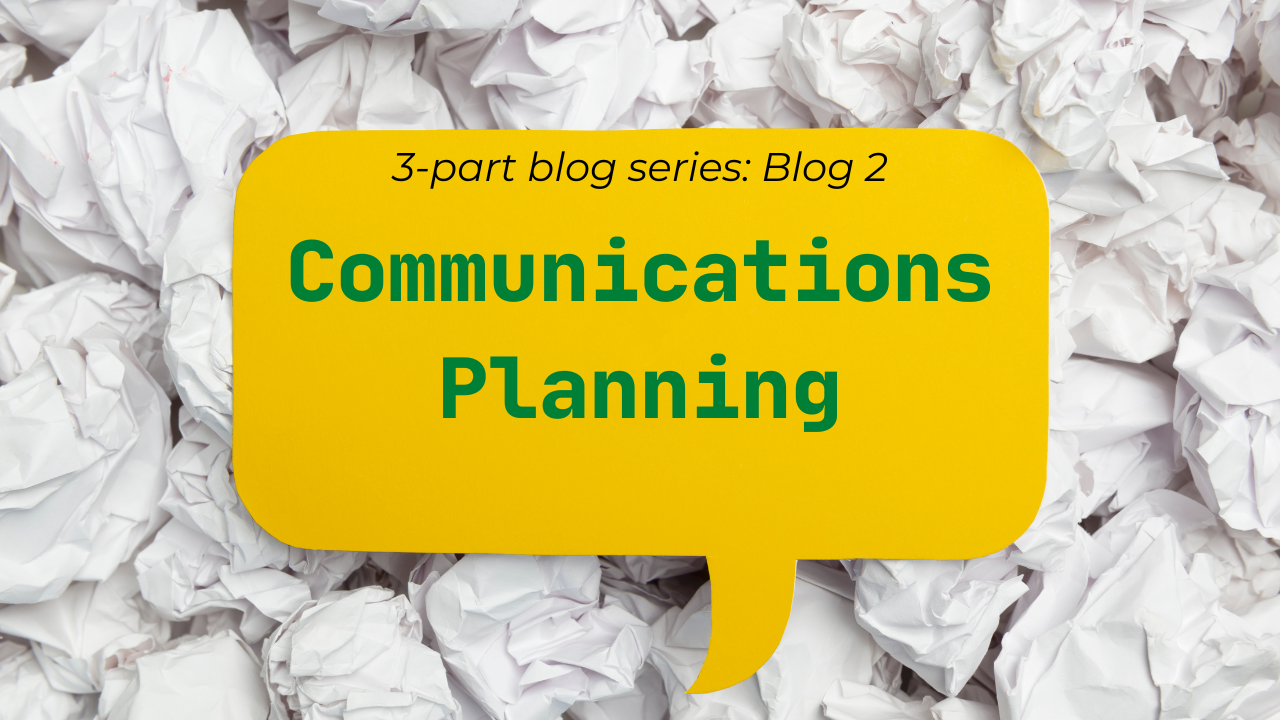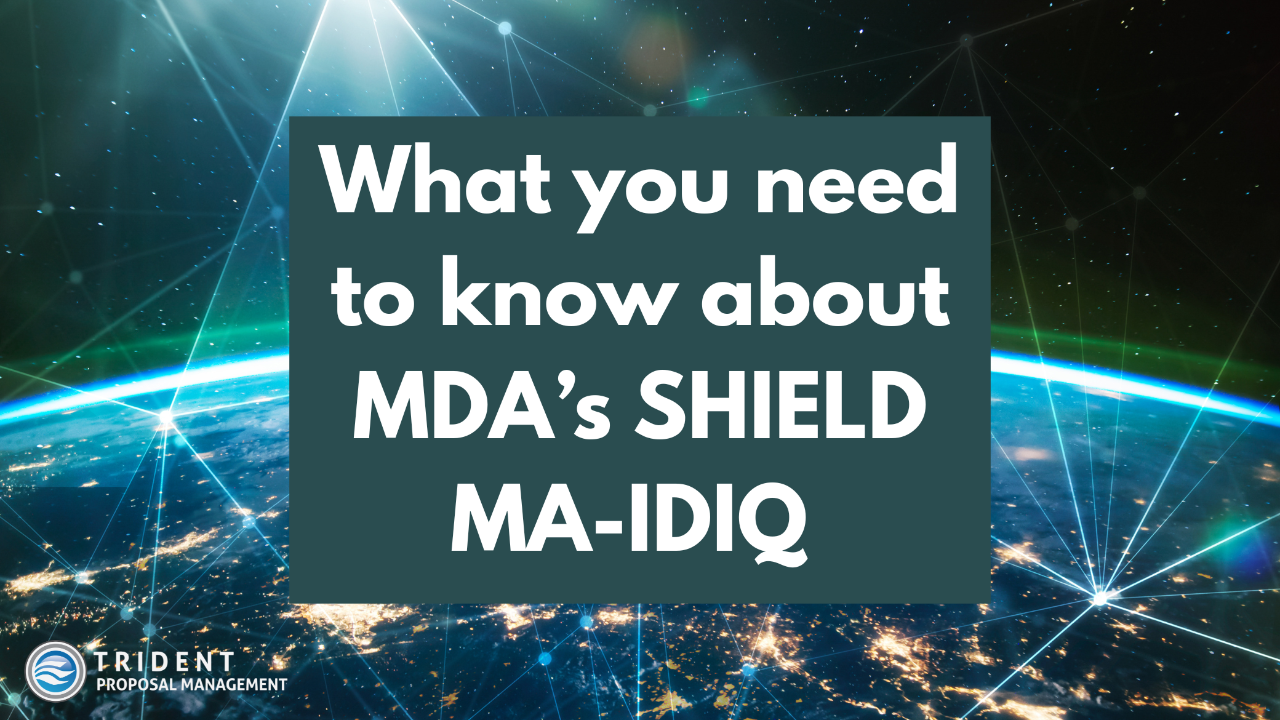Blog Series: Communications Planning with a Purpose (Blog 2)
Sep 13, 2022
Guest Post by Mitch Reed, DBA, CPP, Fellow APMP
“People do business with those they know and trust."
This quote is as valid for the government market as it is for the commercial market. But how do you establish yourself as someone known and trusted by the customer – especially if you are not an incumbent performer? The answer is planned and purposeful communication.
This blog, the second in our three-part series, will discuss how research informs the communications plan and explain how the communications plan can improve the contractor’s opportunity to impact the RFP and build trust with the customer. Executed correctly, your communication plan can lead to an increased chance of an award decision.
Understanding the Communications Plan
The primary goal of the communications plan is to understand the customer’s “problem” to be solved, such as concerns or issues they are experiencing. You can use this insight to better frame your proposed solution in a way that not only addresses the eventual RFP requirements, but also explains how your proposed solution will positively impact the program’s operational and mission capabilities. In other words, how your solution will comply with the requirements and make the customer more successful in their mission. The second primary goal is to make the customer aware of your company’s unique capabilities they can use to address their needs and solve their “problem.”
Remember, your competitors are also communicating with your customer to accomplish these same goals.
In addition to clarifying the customer’s true requirements, contractors who take the time to work with their customers at this level often build a better understanding of how much of a “premium” a customer is willing to pay for a given feature / benefit being offered, which is a critical factor when developing your Price-to-Win approach. This is supported by the research that indicated that customer contract awards decreased as the overall proposal rating increased.
At first, this may appear counterintuitive; but this trend can be attributed to contractors proposing a superior solution than their competitors but at a higher (and likely harder to justify) cost. In layman’s terms – they offered a great product, but were too expensive.
My research also found that the awarded price was negatively correlated (-.4611) with the customer's responsiveness to discuss the RFP anytime reasonably requested. More simply stated, the more time the contractor spent with the customer, the more likely the contractor offered a lower price for the proposed solution. This may indicate the contractor was willing to take on additional pricing risk because they were confident in their ability to perform based on knowledge of the program requirements and budget.
This result may also indicate that unsuccessful contractors did not meaningfully engage with the customer during the early phases of the acquisition cycle and/or did not fully understand the program requirements, budget, or both.
Elements of an Effective Communications Plan
An effective communications plan should address the following six factors:
- Who needs to be contacted:
- End Customer / User: Familiarity with the End Customer / User helps offerors develop an understanding of the program’s requirements and operational applications.
- Program Management Office (PMO): The PMO represents the end customer. Research showed that successful contractors met with more PMO personnel than unsuccessful contractors; an average of 2.80 PMO personnel vs. 2.16 PMO personnel, respectively. That extra PMO person may make the difference between winning or losing based on my research.
- Contracting Officer (CO): Research indicated that successful contractors met with CO personnel less than unsuccessful contractors; an average of 0.60 vs. 0.84 CO personnel respectively. More importantly, successful contractors each had recent experience (within the last three years) with the opportunity CO.
- Why communications need to occur: Customer communications need to be purposeful, targeted, and provide new ideas or information.
- Caution: Blevins’ (2005) research, Informal Influences in the Process of IDIQ Contractor Selection for Task Award, found that contractors engaging in “marketing” type activities were viewed negatively by customers. This included the use of brochures, unannounced drop-ins, and pressuring customers for work (p. 35-40).
- How communications should occur: Customers indicated that the best marketing method for participants is periodic communication. Blevins (2005) found that "… contractors should limit themselves to making brief calls periodically to ask about upcoming tasks to be award[ed]. If the decision maker needed the contractor to come in for further discussion, then that could be arranged during the brief phone call" (p. 40).
- What outcome is expected from the communication efforts: Every meeting must have a purpose; a clear goal to be achieved. Examples of a goal or purpose include providing new innovative ideas, building trust, and presenting contractor capabilities to meet program requirements, goals, or objectives. While this may seem similar to factor 2 above, defining the communications outcome is different from identifying why they need to occur. For example, an offeror may need to meet with the customer to recommend certain past performance requirements that will facilitate future program success (the “why”), and the result (or “outcome”) may be a solicitation whose requirements include past performance experience that your competition does not have.
- When communications (meetings, calls, emails, etc.) need to happen: Research indicated that successful contractors were aware of opportunities over four months sooner than unsuccessful contractors (average of 11.60 months vs. 7.42 months). This additional time suggested that successful contractors who actively engage in customer communications sooner in the acquisition cycle had a greater chance of receiving the award.
- What message is to be transmitted: Qualitative research by Blevins (2005) indicated that "decision makers" wanted in-person presentations from the contractor to provide "innovative or extremely successful processes used by a contractor to perform tasks" (p. 40).
Timing is Everything
As discussed above, poor or improper customer communications can lead to negative trust and commitment, and the communications plan may not provide the desired benefits if it is not executed at the right time. The impact of the communications plan depends on what part of the government’s acquisition phase you begin with for your plan’s execution. As noted in Customer Communications’ Impact on Contract Awards blog (LINK), Perceived Trust and Perceived Commitment in the absence of Communications Interchange showed a statistically significant, negative impact on the award decision.
Understanding what acquisition phase, the customer is working within is critical to developing and executing the communications plan. Figure 1 presents the government's acquisition and contractor business acquisition cycle. Knowing which phase the government acquisition is in, you can better understand (Reed, 2017) "how it aligns with industries' business acquisition processes, and the steps professionals perform during each phase to prepare to win" (p. 24).

Figure 1: Federal Acquisition Process & Contractor Business Acquisition Cycle. While not comprehensive, the broad Federal acquisition process steps above demonstrate how the industry interacts with the government customer and contracting agency. (Sources: Army Source Selection Manual (February 26, 2009), and Shipley Capture Guide, page vii, 2008)
Understanding the alignment between the federal and business acquisition cycles is paramount to creating a communications plan that is part of the overall capture plan. This understanding is also essential because the more the customer is within the government's acquisition cycle, the less opportunities they have to influence the procurement, as shown in Figure 1. As discussed by Reed (2018), "Program Management Offices initiate program opportunities long before they engage contracting agencies to develop mission requirements, budgets, and potential contract vehicles to maximize programs success" (p.3). By engaging with the customer during this timeframe, the contractor has the "greatest opportunity to favorably impact the program. The second-best opportunity for engagement is during the Acquisition Planning phase of Market Research" (p. 3).
For more information on communication methods and their impact on government acquisition, see Present Solutions to Meet Mission Requirements Early in the Government Procurement Process to Improve Win Probability by Mitch Reed (2018).
Conclusion
The communications plan does not need be complex, just well thought out and well timed. The overall outcome of the customer communications plan should provide direct inputs into proposal planning by driving decisions on critical solution requirements, initial and final Price-to-Win approach, past performance requirements, teaming partners / vendor’s needs, key personnel required, internal resource requirements, and more. In the world of government contracting, you can develop both customer recognition and trust by getting to know and understand your customer’s program requirements, goals, and objectives – make their mission your mission. You can solidify your stance as a trusted contractor by providing valuable recommendations or innovative ideas that improve their ability to achieve program success. Take these critical steps early on to help you on your next win.
Trident Proposal Management hosted a Webinar Q&A session with Dr. Reed. You can watch it here.
Dr. Mitch Reed, DBA, is a seasoned capture and proposal expert who brings more than 30 years of experience supporting business and proposal development. Dr. Reed recently completed his doctorate dissertation on Assessing the Business-to-Government/Contractor Relationship and the pre-solicitation relationship impact on award decisions. He has condensed his dissertation into a three-part blog series that presents his findings on communications’ impact on contract awards, and how to apply those findings to support proactive, effective communications and pre-proposal planning.
This blog is part two of a three-part blog series. To read blog one visit here. We’d like to thank Dr. Reed for his contribution to contracting research and providing us with information to share with the contracting community. If this blog seemed overwhelming, then today is a great opportunity to reach out to the Subject Matter Experts here at Trident Proposal Management. We can help you take the first steps (or recompete steps) in your upcoming proposal.
Reference:
Army Source Selection Manual. February 26, 2009
Blevins, Jason E. (2005). Informal Influences in the Process of IDIQ Contractor Selection for Task Award. Theses and Dissertations. 3789. https://scholar.afit.edu/etd/3789
Newman, Larry (2008). Shipley Capture Guide, Shipley and Associates. page vii, 2008
Reed, Mitchell Lee, "Assessing B2G Customer/Contractor Relationships Using Social Exchange Theory During the Search and Selection Stage." Dissertation, Georgia State University, 2022. doi: https://doi.org/10.57709/29846956
Reed, Mitch (2017). Aligning Business and Government Acquisition Processes to Improve Win Probability. APMP Journal. Volume V Number II, 2017. pp. 24-26.
Reed, Mitch (2018). Present Solutions to Meet Mission Requirements Early in the Government Procurement Process to Improve Win Probability. Envistacom. April 16, 2018.



